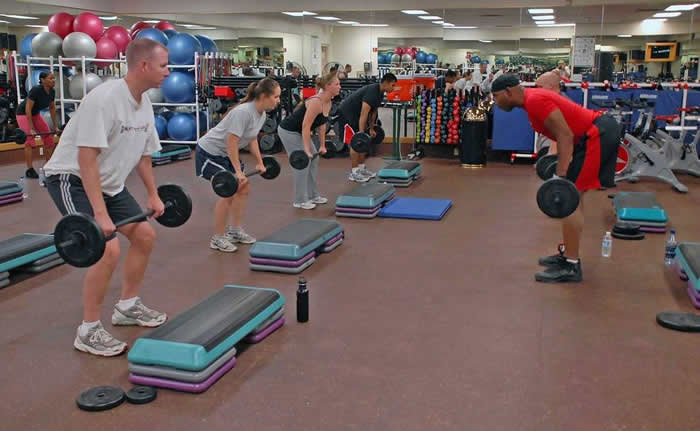How to Make Sure a Workout Class is Actually Helping Your Posture
You’ve taken the first step. You walked into an intimidating workout class where you power through the warm up, you barely survive the grueling workout, you’re pushed to fatigue, and you’re relieved when the instructor tells you to go home. Good for you! Except the next day your body is super sore and that twinge of pain you had in your back suddenly got worse.

We all know that workout classes are a great way to push your body. We usually don’t think: Is the workout class good for my alignment and posture?
Proper joint alignment can greatly impact the efficiency and harmony of your movement patterns. Improper alignment can cause undue pain and injury. If you’re planning to add (exercise induced) repetitive load to your joints and muscles, the best plan is to make sure you are exercising in proper joint alignment.
In 15 years as a fitness instructor (and self-proclaimed posture geek) I’ve seen countless clients recover from back, knee, neck, and hip pain. They’ve done this through workouts that teach them how to move with better posture. Until the entire fitness industry catches up with this posture trend, it’s up to you to be smart about what your workout class is doing to your body’s alignment.
PICK THE RIGHT WORKOUT
There are so many options these days, how do you know what kind of workout is good for your posture? You need to look at the movements that the particular exercise class teaches.
Yoga is by far the best exercise for body alignment. Most yoga classes combine spinal flexion (bending forward) with spinal extension (bending backwards), which is wonderful balance for the body. Yoga promotes strength and flexibility, and most important, great breath control. However, new exercisers should be cautious with Yoga. In the beginning, the spinal extension (back bending) can be far too intense unless your back is ready. If you’re new to Yoga, it is important to take a level one class and ease yourself into it.
Pilates is the other mind body exercise touted as posture friendly. The problem with Pilates is that it involves a great deal of spinal flexion (bending forward in a “crunch position”). Pilates has evolved over the years and many instructors teach a more balanced approach. It’s important to pay attention: If you are lying on your back doing a ton of crunch type exercises, then perhaps this is the wrong class for you.
CrossFit has enjoyed a rise in popularity in recent years. However, the rise of CrossFit (and other high intensity strength training classes) has also increased the rise of chiropractic visits, as some CrossFitters end up injured. With this level of intensity, it’s easy to use incorrect form when squatting or lifting heavy weights. These classes don’t always include proper stretching and recovery work into their workouts- this entirely depends on the instructor teaching the class.
Cycling is one of my least favorite options from a posture perspective. It’s wonderful for cardiovascular fitness, however think about the body position: bent over, in a hip flexed position, for 45 minutes. As a population, we are already bent over and sitting in hip flexion all day. Cycling doesn’t allow us to open up the body and extend the spine, and it promotes deeper tightness in the muscles that are already (often) chronically tight.
When working out, analyze the position of your body throughout the exercises. Are you balanced from front to back? Are you sitting and standing in a position that will help your long term posture? The answer should be YES!
DEMAND ATTENTION
The role of a fitness instructor is to make sure you are exercising properly. Some instructors see this as an opportunity to simply tell you what exercises to do and count your repetitions. Nowadays, there is so much choice in the market, therefore look for instructors who go above and beyond. Great instructors can teach a whole room while individually adjusting form and posture with simple verbal cues: “Be sure to bring your left hip backwards and push through the heel to activate your glutes”. Kinesthetic cueing (touching) is another great way to make sure the body is in alignment and working the correct muscles. When an instructor moves your hips or your spine into a better position, you can then work in better alignment.
Find a class where you can demand attention. Where you are corrected by the instructor and inspired to perform the exercises to the best of your ability. Where when he/she walks close to you in class, you automatically stand taller, breath deeper and work harder.
It’s your choice, it’s your responsibility, and it’s your body. Don’t just float through your workout thinking this is “good” for you. Staying healthy and fit requires a mind-body connection. Think about what your workout class is doing to every muscle and joint, and find one that will keep you balanced and injury free.
About the Author:
Zeena Dhalla is an NPI-Certified Posture Specialist™ and self proclaimed posture GEEK. She specializes in helping people feel less pain and look leaner through home based exercise and stretch routines. Download her 5 Minute Solution to Hunchback Posture if you want to improve your posture and intimidate those around you with your rock star stance. |